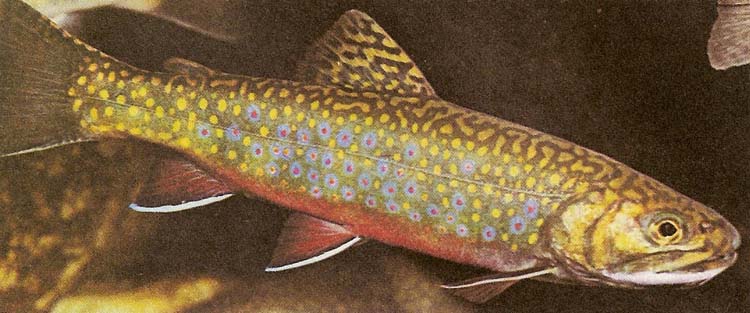lateral line

The brook trout, Salvelinus fontinalis, has a prominent lateral line.

The lateral line organs (1) transmit information about the movement of water. The lateral line itself (shown on a red mullet) runs from head to tail o either side of the fish. It consists of a fluid-filled canal (2) with pores (arrowed) opening to the water through scales (3). Behind each pore is a sensory organ, the neuromast (4). This is made up of a gelatinous mass, the cupula (5), with a cluster of sensory hair cells (6) whose fibers combine in a nerve (7) running to the brain.
The lateral line is a system of sensory cells embedded in pits or canals along the side of the body in fish and tailed amphibians. These organs probably detect the low-frequency vibrations in water which come from the movement of prey and shoaling companions. It is also possible that movements set up by the animal itself and reflected off distant objects may be detected in a form of echo-location.


